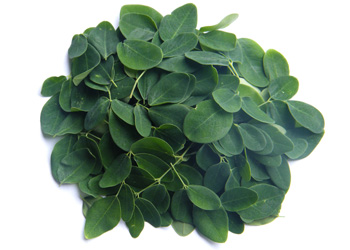
Moringa oleifera |
 |
Awodele, O., I. A. Oreagba, S. Odoma, J. A. Teixeira da Silva and V. O. Osunkalu. 2012.Toxicological evaluation of the aqueous leaf extract of Moringa oleifera Lam. (Moringaceae). J Ethnopharmacol. 139, 2: 330-336. Abstract Ethanopharmacological relevance: The rapid increase in consumption of herbal remedies worldwide has been stimulated by several factors, including the notion that all herbal products are safe and effective. However, over the past decade, several news-catching episodes in developed communities indicated adverse effects, sometimes life-threatening, allegedly arising as a consequence to taking herbal products or traditional medicines from various ethnic groups. Despite the popular use of Moringa oleifera for treating various disorders, there is limited or no scientific data available regarding safety aspects of this remedy, nor are there any documented toxicological studies that can be used to ascertain the safety index of its herbal preparation. Therefore, this present study aimed to carry out extensive toxicological evaluation of the aqueous leaf extract of Moringa oleifera. Materials and Methods: In an acute toxicity test, male Wistar albino mice were orally administered an aqueous extract up to 6400 mg/kg and intraperitoneally up to 2000 mg/kg. A sub-chronic toxicity test was performed by daily administration with the extract at 250, 500 and 1500 mg/kg orally for 60 days. Control rats received distilled water. Sperm quality was analyzed, haematological and biochemical (liver enzymes, urea and creatinine) parameters were determined and a histopathological examination was carried out. Results: The LD50 was estimated to be 1585 mg/kg. The extract did not elicit any significant difference (P≥0.05) in sperm quality, haematological and biochemical parameters in the treated rats compared to the control. Moreover, there was no significant difference in weight gain of the control and treated animals although there was a dose-dependent reduction in food consumption of the animals treated with 250 to 1500 mg/kg extract. Conclusions: Results obtained in this study suggest that the aqueous leaf extract of Moringa oleiferais relatively safe when administered orally. .......................................................................... Sánchez-Machado, D. I., J. A. Núñez-Gastélum, C. Reyes-Moreno, B. Ramírez-Wong and J. López-Cervantes. 2010. Nutritional Quality of Edible Parts of Moringa oleifera. Food Anal. Methods 3: 175–180. Abstract: This study was carried out in order to compare the biochemical characteristics from three edible parts of the multipurpose tree Moringa oleifera such as the leaves, flowers, and immature pods. On average, the three most abundant amino acids were glutamic acid, arginine, and aspartic acid. The fatty acids present at the highest content were linolenic acid (C18:3ω3), palmitic acid (C16:0), linoleic acid (C18:2ω6), and oleic acid (C18:1ω9). The chemical composition (of dry weight) ranged from 19.34% to 22.42% for protein, 1.28% to 4.96% for lipids, 7.62% to 14.60% for ash, and 30.97% to 46.78% for dietary fiber. M. oleifera is a nonconventional plant with substantial nutritional value. ........................................................................................................ Chumark, P., P. Khunawat, Y. Sanvarinda, S. Phornchirasilp, N. P. Morales, L. Phivthong-ngam, P. Ratanachamnong, S. Srisawat, K.-S. Pongrapeeporn.2008. The in vitro and ex vivoantioxidant properties, hypolipidaemic and antiatherosclerotic activities of water extract of Moringa oleifera Lam. leaves. Journal of Ethnopharmacology 116: 439–446. Abstract; Moringa oleifera is used in Thai traditional medicine as cardiotonic. Recent studies demonstrated its hypocholesterolaemic effect. However, to be clinically useful, more scientific data are needed. Aim of the Study:We investigated the antioxidant, hypolipidaemic and antiatherosclerotic activitiesof Moringa oleifera leaf extract. Materials and Methods: Scavenging activity of the extract on 1,1-diphenyl-2-picrylhydrazyl radicals (DPPH), and the inhibitory effect on Cu2+-induced low-density lipoprotein (LDL) oxidation were determined in in vitro experiment. The effects of the extract on cholesterol levels, conjugated diene (CD) and thiobarbituric acid reactive substances (TBARS) and plaque formations in cholesterol-fed rabbits were investigated. Results: We found that in scavenging DPPH radicals the extract and Trolox® had IC50 of 78.15±0.92 and 2.14±0.12g/ml, respectively. The extract significantly (P < 0.05) prolonged the lag-time of CD formation and inhibited TBARS formation in both in vitro and ex vivo experiments in a dose-dependent manner. In hypercholesterol-fed rabbits, at 12 weeks of treatment, it significantly (P < 0.05) lowered the cholesterol levels and reduced the atherosclerotic plaque formation to about 50 and 86%, respectively. These effects were at degrees comparable to those of simvastatin. Conclusions: The results indicate that this plant possesses antioxidant, hypolipidaemic and antiatherosclerotic activities and has therapeutic potential for the prevention of cardiovascular diseases. |
| กลับหน้าหลักสมุนไพร |
